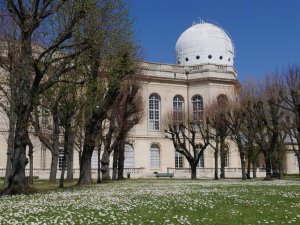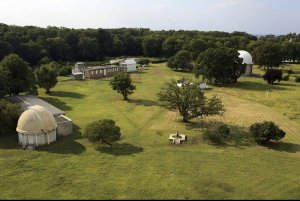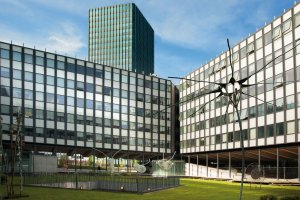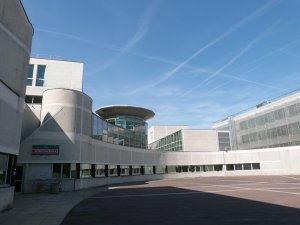Master 2 internship offer from March 2023
Publié le 8 juin 2023 par .
Subject : Detailed study and improvement of the metal contacts to GaAs New technological developments for sensitive astronomical receivers
Dr. Lina GATILOVA (LERMA, Observatoire de Paris, Paris), lina.gatilova@obspm.fr
Dr. Yong JIN (C2N, CNRS, Palaiseau), yong.jin@c2n.upsaclay.fr
Project context
During the last 15 years, LERMA-Observatoire de Paris associated with Center for Nanosciences and Nanotechnologies (C2N) work together on design and realisation of electronic devices, based on gallium arsenide (GaAs) Schottky diodes, in order to build the sensitive receivers working at THz frequencies for astronomy and astrophysics. Recently, LERMA-C2N developed and fabricated the sources (frequency multipliers) at 300GHz and 600GHz, as well as the 1.2THz detector (frequency mixer), that have been installed on the Submillimeter Wave Instrument (SWI) for the Jupiter ICy moon Explorer (JUICE) mission of ESA, which will be launched in April of 2023 to study Jupiter and its Galilean moons. The performances of the mixers at 600Hz and 1.2THz built by LERMA-C2N have defined a new state-of-the-art in the domain of heterodyne detectors at these frequencies. To keep its leading position and to meet the new demands of space agencies (CNES, ESA, NASA…), LERMA aims to push further the limits of fabrication technology to reach the working frequencies as high as 5THz. To perform this, each fabrication step should be perfectly optimized and controlled. In particular, the metal-to-semiconductor contacts are the key points of any electronic device, and their preparation and characterization are the major efforts in circuit fabrication. The understanding of mechanisms and optimization of experimental conditions allowing the realisation of low-resistance, stable contacts are essential to obtain the performant and reliable integrated circuits at high frequencies.
Objectives
The aim of this internship is to develop the fabrication process allowing the realisation of the low-resistance stable metal contacts to GaAs. The process development will be conducted in the advanced clean room of C2N on state-of-the art equipment for micro- and nano-fabrication. This work will allow the Master student to acquire a large experience in nano-technology and device fabrication (optical and/or electron beam lithography, thin metal layer deposition, dry and wet etching and other clean room tools), as well as in characterizations of the microwave circuits.
This work will be performed in the frame of R&T CNES and PEPR project for the development of very high frequency receivers for astronomy. This internship could be continued by the PhD thesis in collaboration between LERMA, C2N and CNES (application for grant to be made).
Candidate
Candidate should be motivated, autonomous, rigorous and have the good communication skills. Required education level : Master 1 or equivalent degree in engineering. Knowledge in materials science, physics of solids or nano/microfabrication. Good knowledge of English is expected.
Contact persons : To apply please send your motivation letter, CV, and recommendation letters (optional) to :
Dr. Lina GATILOVA (LERMA, Observatoire de Paris, Paris), lina.gatilova@obspm.fr
Dr. Yong JIN (C2N, CNRS, Palaiseau), yong.jin@c2n.upsaclay.fr




